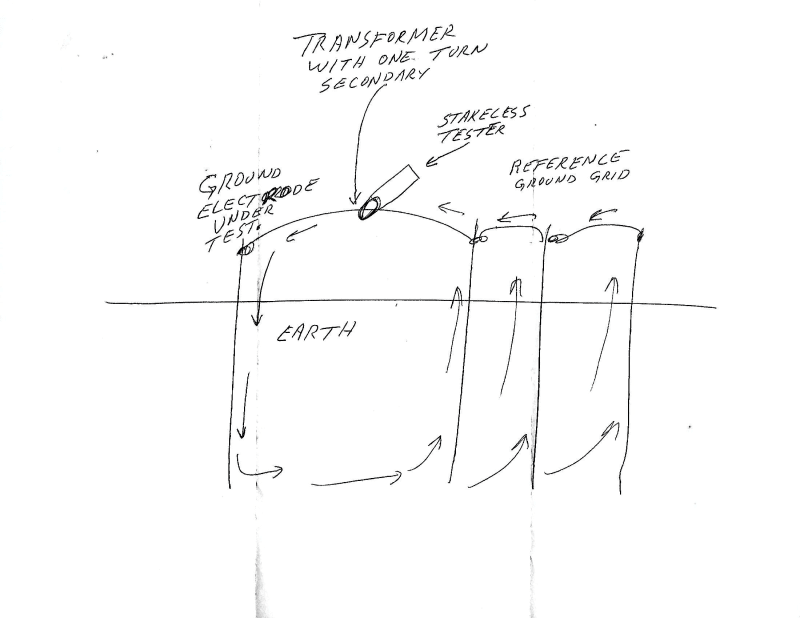Mr. Che;
You misunderstand the common use of the stakeless tests and the stakeless measurements.
How do you measure ground resistance without a reference ground?
In recognition of your contributions to Eng-Tips and of your knowledge, I will try to explain stakeless testing.
The tester forms a transformer with a one turn secondary winding.
Think of a CT in reverse as the CT is a transformer with a one turn primary winding.
The instantaneous current flow is from the tester to the electrode under test, from there through the earth to the reference grid or electrode, up the reference electrode and back to the tester.
Ground resistance specs are generally expressed as "Less than X Ohms".
X may be 5 Ohms, 25 Ohms or some other value selected by the design engineer or required by applicable engineering standards.
The result of a stakeless test may be expressed as "Less than X Ohms".
Often the resistance to ground of the reference grid will be much less than the resistance to ground of the electrode under test.
The stakeless test is widely used and is quick and easy.
The results are accurate within the limitations of the test.
Bill
--------------------
Ohm's law
Not just a good idea;
It's the LAW!
